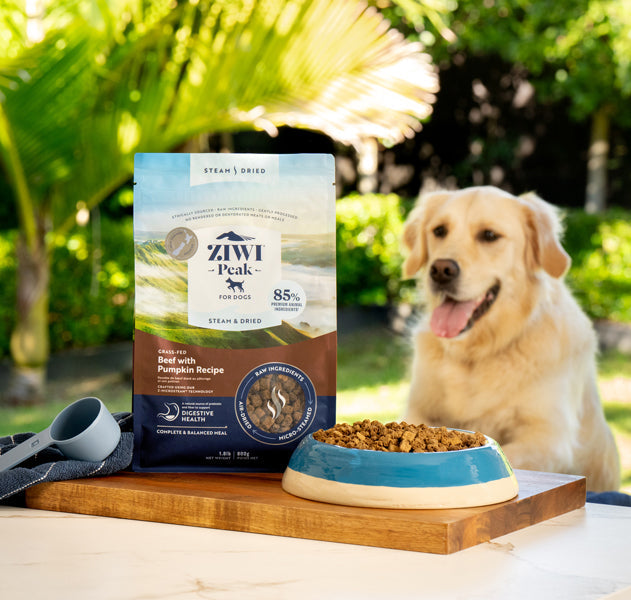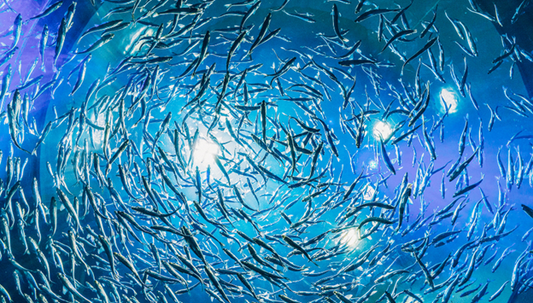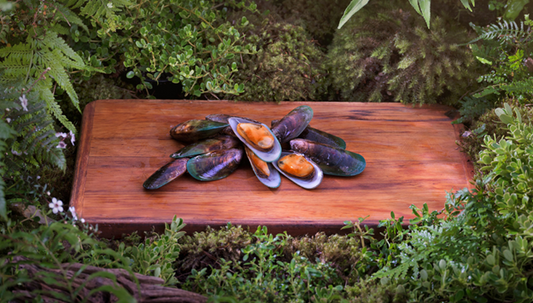
Sometimes it seems like dogs can eat just about anything. Dogs are known as “opportunistic carnivores”, which means they have more flexibility in their diet and can process nutrients from fruits and vegetables.
But remember, they are still mainly carnivores. They thrive on a meat-rich diet, just like the one they’d enjoy in nature. Some kibble brands forget this and put in too much filler, like potatoes and starches, but a healthy dog’s diet should always be based around high-quality meat.
That doesn't mean you should throw fruits and vegetables out entirely, though.
We believe that nature contains everything a pet needs to thrive, and that starts with a meat-rich diet. Pet foods like ZIWI Peak’s Steam & Dried range start with meat, but also include fruits and vegetables in the right ratios for maximum nutrition.
Have a read of some of the key nutrients and benefits of these fruits and vegetables below.
Fibre
Same with people, fibre is important in helping dogs maintain a balanced gut, supporting bowel regularity, and improving stool quality. Fibre can be found in vegetables like green beans, rutabagas, carrots.
Orchard fruits like apples, pears, persimmons, and kiwifruit also contain fibre, and can be found in the Steam & Dried Chicken with Orchard Fruits recipe for dogs.
Vitamin A
Carrots are a rich source of vitamin A, which supports your dog’s vision, growth, cellular differentiation, reproduction, and immune response. Carrot pieces also make for great, crunchy treats.
Vitamin C
Rutabagas, beets, apples, pears, and persimmons, contain vitamin C, which provides antioxidant effects to help protect cells from free radicals. It may also help support immune system function, as well as collagen synthesis. An especially rich source of vitamin C is kiwifruit (or kiwi).
Calcium and Phosphorus
Green beans, kale, beet greens and rutabaga all contain calcium, and green beans and rutabaga also contain phosphorus. Calcium and phosphorus are both needed for growth and maintenance of bones and teeth.
Calcium is also involved in blood coagulation and nerve impulse transmission, and phosphorus plays a key part in energy metabolism. If you’re looking for a recipe with green vegetables, ZIWI’s Steam & Dried Lamb with Green Vegetables recipe is a great place to start.
Manganese, Magnesium and Potassium
Green beans and rutabaga are good sources of manganese, which is important for normal bone development and brain function in dogs.
Magnesium is another mineral found in green beans, beet greens and rutabaga and is used in energy production, the metabolism of DNA and RNA, the production of proteins, and over 300 other roles.
A wide variety of fruits and vegetables including kale, beet greens, rutabaga, beets, kiwifruit, and pears also provide a source of potassium. Potassium is again vital for many functions in the body such as nerve-impulse transmission and other essential bodily transport functions.
Iron
Protein will be your pet’s main source of iron, but beet greens, spinach and rutabaga contain some too. Iron which is required for the formation of haemoglobin and myoglobin, immune system function, as well as DNA and RNA synthesis.
Antioxidants
Finally, blueberries, pears, kale, spinach are a great source of antioxidants. Antioxidants function by helping to protect the body against damaging free radicals.
What fruits and vegetables should my dog avoid?
This is a list of the most common fruits and vegetables that should be avoided. But if you’re ever unsure, or if you’re worried about your dog’s health after they eat something, get in touch with your vet.
Avocado
Cherries
Grapes
Raisins
Tomatoes
Asparagus
Mushrooms
Onions
Source (extra reference):
https://www.akc.org/expert-advice/nutrition/fruits-vegetables-dogs-can-and-cant-eat/









